Students' 3D-printed Concrete Choreography pillars provide a stage for dancers
Dancers at the Origen Festival in the Swiss Alps will perform around nine unique columns 3D-printed in concrete by students from ETH Zurich.
The masters students produced the columns using a new process, developed at the technology school, that allows for the fast 3D-printing of concrete structures completely without formwork or any other kind of mould.
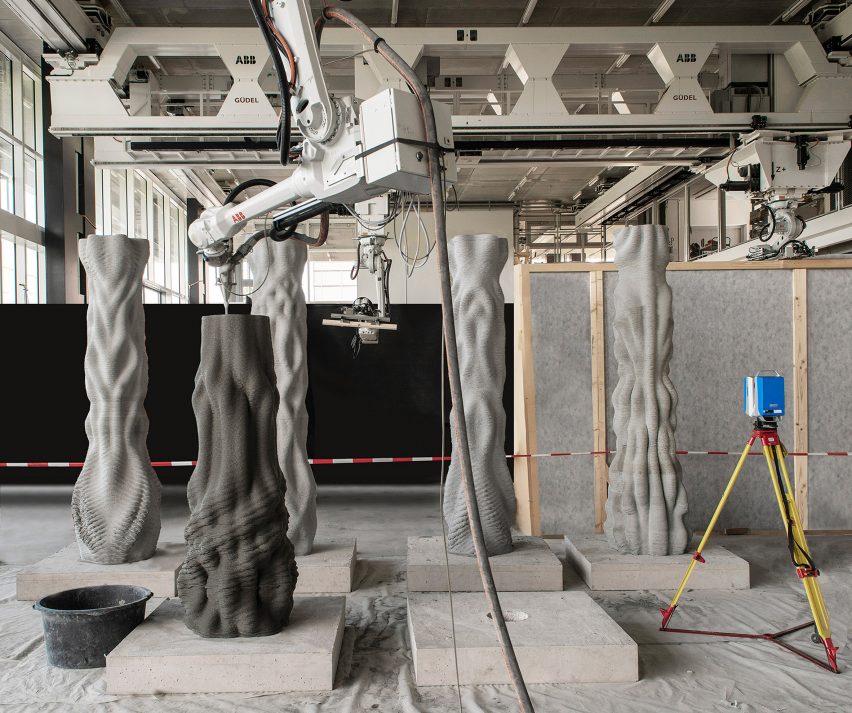
Titled Concrete Choreography, the series of structures took less than two-and-a-half hours to print in the lab using an industrial robot arm that extrudes concrete in precise layers.
"This can reduce the ecological footprint of concrete construction by entirely removing the formwork and by using less concrete," PhD researcher Ana Anton, one of the teaching team at ETH Zurich's Digital Building Technologies unit, told Dezeen.
"We are able to strategically place the material only where needed," she added.
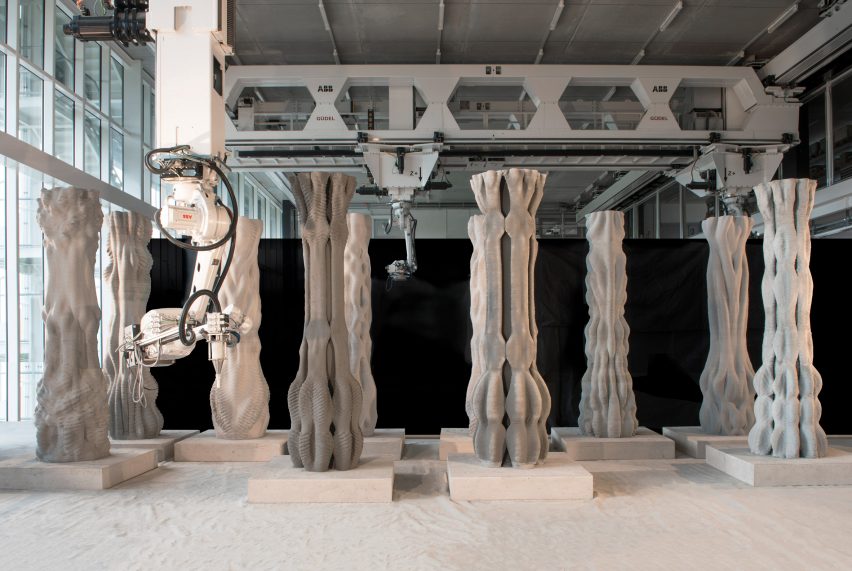
It also allows for completely bespoke designs, incorporating complex patterns that are only achievable through high-resolution 3D-printing — the layers of concrete the robot places down are just five millimetres thick.
For Concrete Choreography, the students aimed to create fluid-looking forms that showcased the idiosyncrasies of both the material and the process.
Their work extended to the inner structure of the columns, which had to add strength with minimal material.
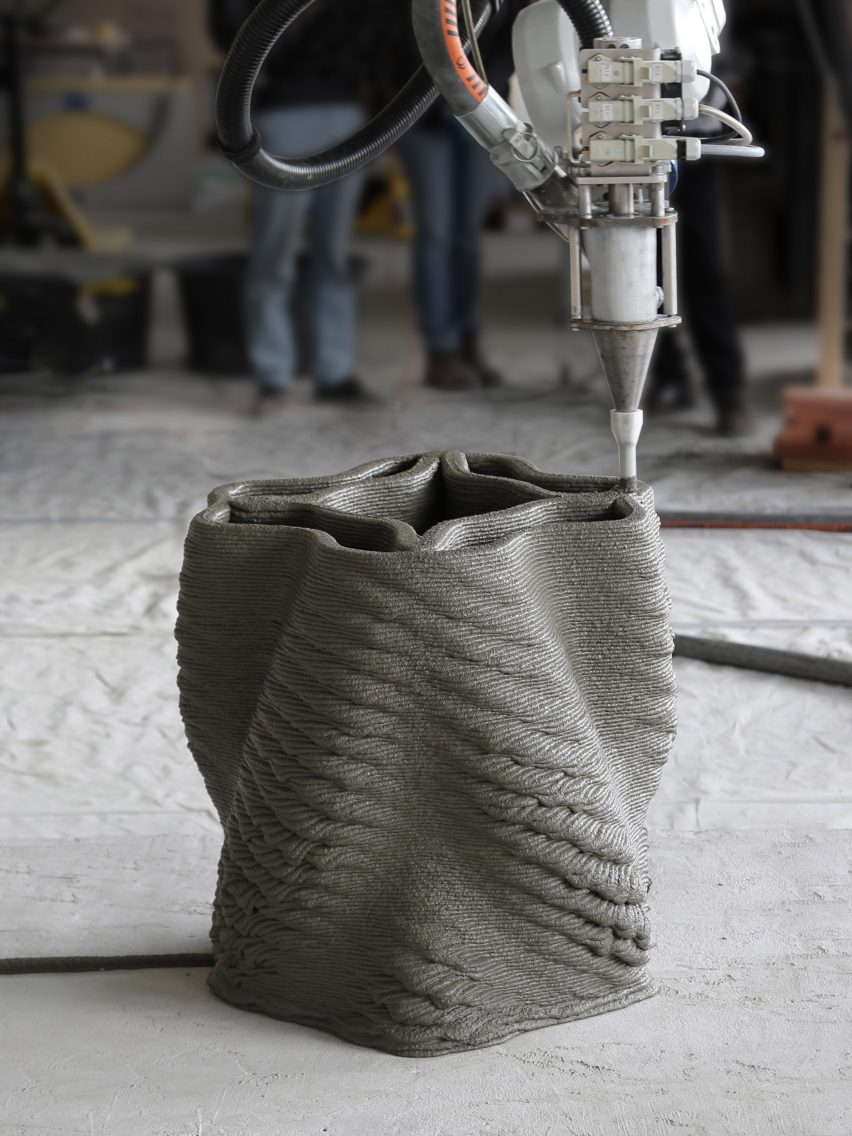
"What makes our concrete printing approach outstanding is that we address both material efficiency and the aesthetic potential of this technology," said Anton.
The speediness of the process is helped by a special fast-setting concrete mix, developed by another research group at ETH Zurich.
Once completed, the 2.7-metre-tall columns were transported by truck and installed at the site — an outdoor terrace in the Julier Pass, part of the Albula Range in the Alps.
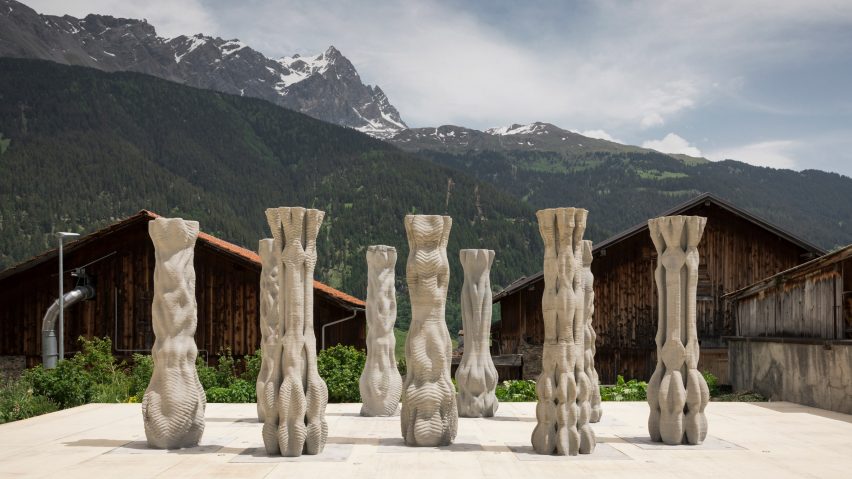
Anton said that Origen Festival founder Giovanni Netzer wanted to create "a bold interplay between cutting-edge research and culture" with a "novel aesthetic".
During July and August, the Concrete Choreography installation will double as a stage for performances.
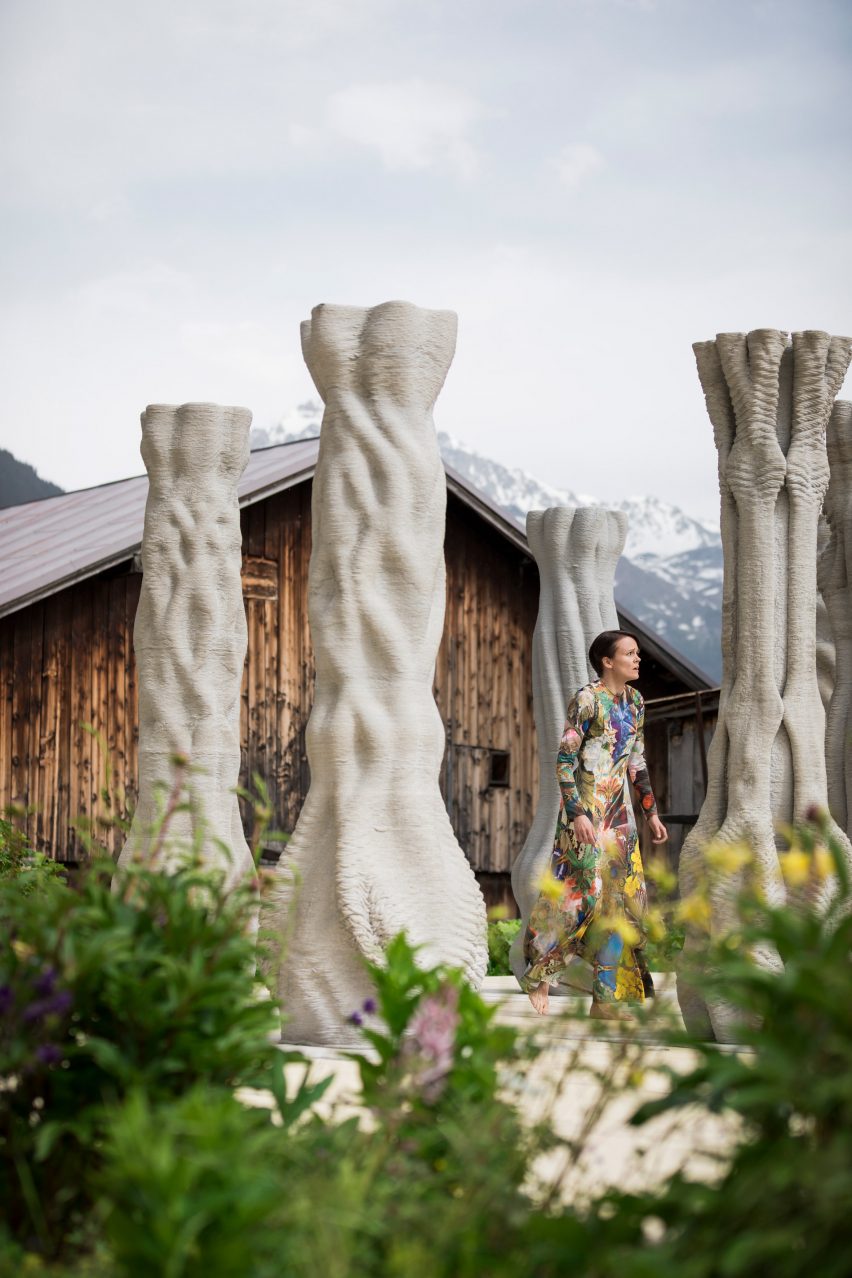
"The columns will create the opportunity for the artists to dance in between, in front, around, to hide, climb and interact in many ways with this unique, monolithic architecture," Anton told Dezeen.
"Each column has his own character and dynamics, just like the dancers."
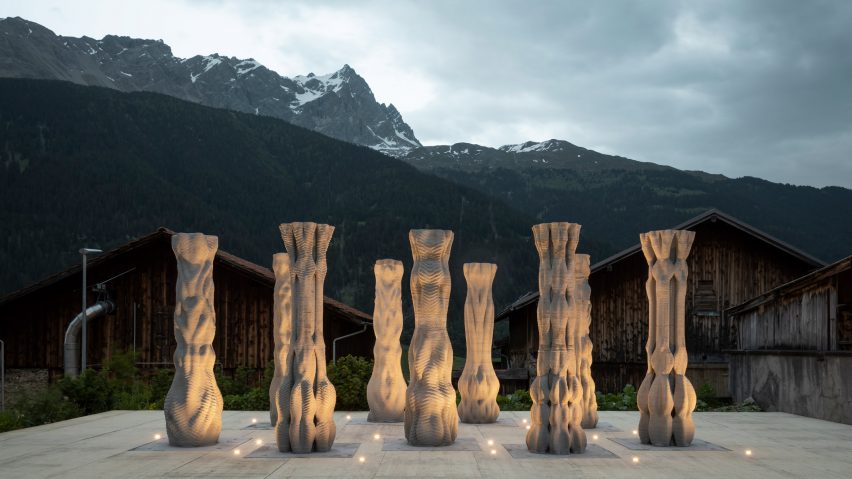
The students involved are all part of ETH Zurich's Master of Advanced Studies in Digital Fabrication and Architecture.
ETH Zurich is one of the world's top schools for architectural technology research. Among other recent projects from its students are the woven Room for Archaeologists and Kids for a dig site in Peru and the intricate metal Deep Facade, made in a 3D-printed mould.
Project credits:
MAS DFAB in architecture and digital fabrication: ETH Zurich
Teaching team: Ana Anton, Patrick Bedarf, Angela Yoo, Timothy Wangler
Students: Antonio Barney, Aya Shaker Ali, Chaoyu Du, Eleni Skevaki, Jonas Van den Bulcke, Keerthana Udaykumar, Nicolas Feihl, Nik Eftekhar Olivo, Noor Khader, Rahul Girish, Sofia Michopoulou, Ying-Shiuan Chen, Yoana Taseva, Yuta Akizuki, Wenqian Yang
Origen Foundation: Giovanni Netzer, Irene Gazzillo, Guido Luzio, Flavia Kistler
Research partners: Robert J. Flatt, Lex Reiter, Timothy Wangler
Technical support: Michael Lyrenmann, Philippe Fleischmann, Andreas Reusser, Heinz Richner
Supported by: Debrunner Acifer Bewehrungen, LafargeHolcim, Elotex, Imerys Aluminates
This research was supported by the NCCR Digital Fabrication, funded by the Swiss National Science Foundation (NCCR Digital Fabrication Agreement #51NF40-141853).